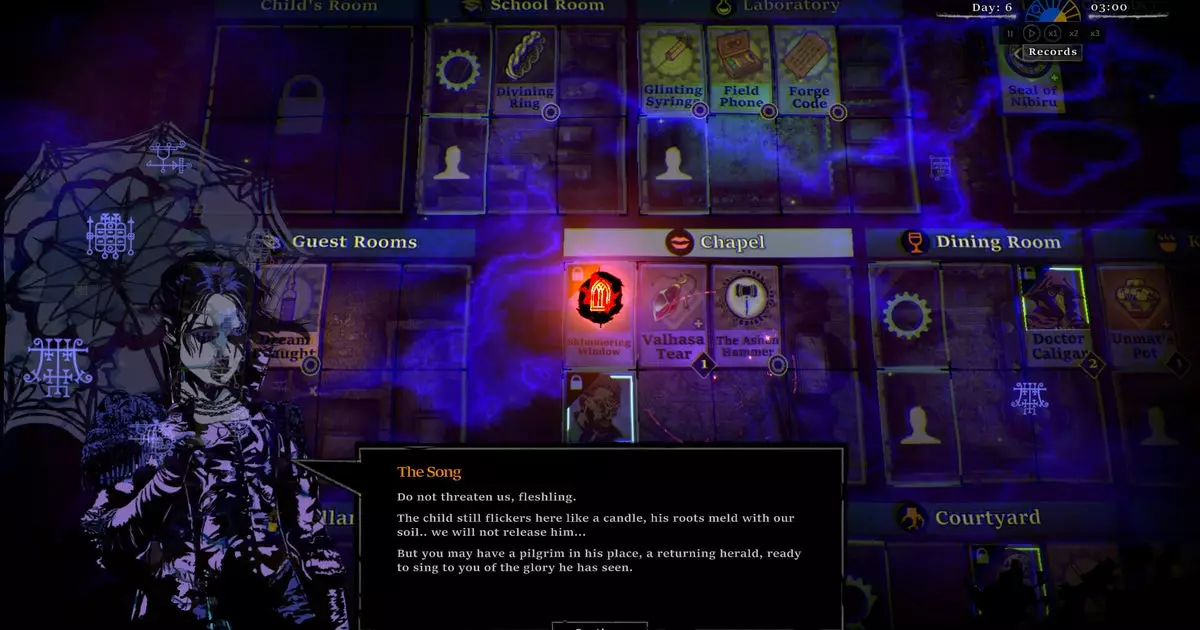The gaming landscape is often replete with titles that allow players to navigate through rich narratives and atmospheric environments. One burgeoning example is *The Horror At Highrook*, a haunted house RPG that invites players to unravel the mysterious tapestry of a long-abandoned mansion. Set against a backdrop that transitions from the mundane realism of daylight to the ethereal glow of moonlight, players are drawn into an immersive experience that showcases not only the visual beauty of the game but also an underlying tension that keeps them engaged. However, this intense atmosphere is accompanied by a critical need for player engagement, as neglecting the core mechanics can lead to dire consequences for your characters.
A standout feature of *The Horror At Highrook* is how its environment shifts and evolves. Players will find themselves captivated by the aesthetic transitions that the game offers; it cleverly mirrors the passage of time, altering the mood with its color palette as they explore the labyrinthine hallways of the mansion. Each detail—from the flickering of candle flames to the sudden drizzle of rain—functions not only as eye candy but as a narrative device that enhances the feeling of disquiet. Yet, while these elements invite admiration, they also serve as a reminder that moments spent marveling at the scenery come at a price. Vigilance is demanded, as idle characters lead to the decay of resources, forcing players to keep their focus on task management and character welfare.
At the heart of *The Horror At Highrook* lies a system that emphasizes resource management and strategic planning through card gameplay. Players are tasked with positioning characters in various sections of the mansion to address their immediate needs—cooking sustenance, searching through dusty archives, or tending to the garden—while also pursuing clues about the tragic fate of the Ackeron family. The interactivity of the cards introduces a layer of complexity, as specific actions and resource access depend on the individual attributes of each character. For example, engaging in laboratory research requires a unique blend of skills facilitated by character traits, while other mystical items may amplify their effectiveness.
This multi-layered approach to gameplay introduces an enjoyable divergence from traditional RPG mechanics—players must think critically about how best to allocate their resources, much like a puzzle to be solved. It evokes comparisons to the classic board game *Cluedo*, albeit with a dark and twisty narrative akin to the tales spun by Edgar Allan Poe or H.P. Lovecraft.
What lends *The Horror At Highrook* its unique flavor are the “vision” and “artifact” cards, which enrich the overall experience. These cards serve to deepen character interactions and unlock new avenues of discovery. For instance, one character may gain strength through a vision that enhances observational skills, while another might receive help in mechanical tasks through artifact-related advantages. This mechanic not only boosts characters’ effectiveness but also emphasizes an underlying theme of exploration and discovery. Each card reveals traits of the supernatural, inviting players to ponder the nature of their abilities and how they influence gameplay.
However, the narrative exposition and character dialogue sometimes become verbose, drawing attention away from critical gameplay mechanics. Finding a harmonious balance between storytelling and action is crucial for maintaining player immersion, especially amidst the frenetic pace of card management and resource gathering.
As one dives deeper into the game’s ominous world, questions arise about certain character portrayals and dialogue. Instances of uncertain accents or unclear backstories can momentarily disrupt the flow of the experience, breaking the otherwise engaging atmosphere. This lack of clarity can be a distraction, leaving players contemplating the developer’s intent and the ultimate coherence of character backgrounds.
While the project, helmed by Tom Betts, former lead programmer at Big Robot, undoubtedly shows promise, these rough edges indicate that more refining could enhance its overall impact. As players venture into the hidden recesses of the Highrook mansion, they will not only encounter challenges and mysteries but also face the intricate tapestry of voices and intentions that shape their experience.
To sum up, *The Horror At Highrook* offers a compelling journey through both the aesthetic and mechanical dimensions of gaming. Its combination of detailed environment and complex character interactions sets it apart, inviting players to unravel the mysteries hidden within its walls. While some aspects may benefit from further refinement, the game presents a hauntingly enjoyable experience, beckoning players to descend into its depths to uncover secrets waiting to be revealed. As it stands, *The Horror At Highrook* serves as a promising invitation for those looking to blend exploration with strategic gameplay—a truly captivating endeavor.


Leave a Reply